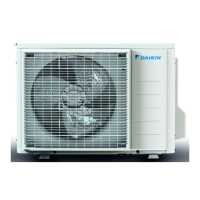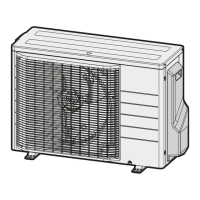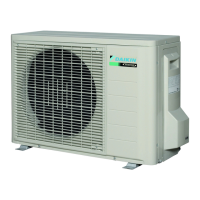7 | Piping installation
Installer reference guide
39
RXTM30+40N2V1B + RXTP25+35N2V1B9 + RXTP25+35N2V1B8 +
ARXTP25+35N2V1B + RXTA30N2V1B
R32 split series
4P518023-7H – 2020.08
▪ After handling the stop valve, tighten the stem cap, and check for refrigerant
leaks.
Item Tightening torque (N∙m)
Stem cap, liquid side 14.2~17.2
Stem cap, gas side 17.1~20.9
To handle the service cap
▪ ALWAYS use a charge hose equipped with a valve depressor pin, since the service
port is a Schrader type valve.
▪ After handling the service port, tighten the service port cap, and check for
refrigerant leaks.
Item Tightening torque (N∙m)
Service port cap 10.8~14.7
7.2.7 To connect the refrigerant piping to the outdoor unit
▪ Piping length. Keep field piping as short as possible.
▪ Piping protection. Protect the field piping against physical damage.
1 Connect the liquid refrigerant connection from the indoor unit to the liquid
stop valve of the outdoor unit.
a Liquid stop valve
b Gas stop valve
c Service port
2 Connect the gas refrigerant connection from the indoor unit to the gas stop
valve of the outdoor unit.
NOTICE
It is recommended that the refrigerant piping between indoor and outdoor unit is
installed in a ducting or the refrigerant piping is wrapped with finishing tape.
7.3 Checking the refrigerant piping
7.3.1 About checking the refrigerant piping
The outdoor unit's internal refrigerant piping has been factory tested for leaks. You
only have to check the outdoor unit's external refrigerant piping.
Before checking the refrigerant piping
Make sure the refrigerant piping is connected between the outdoor unit and the
indoor unit.

